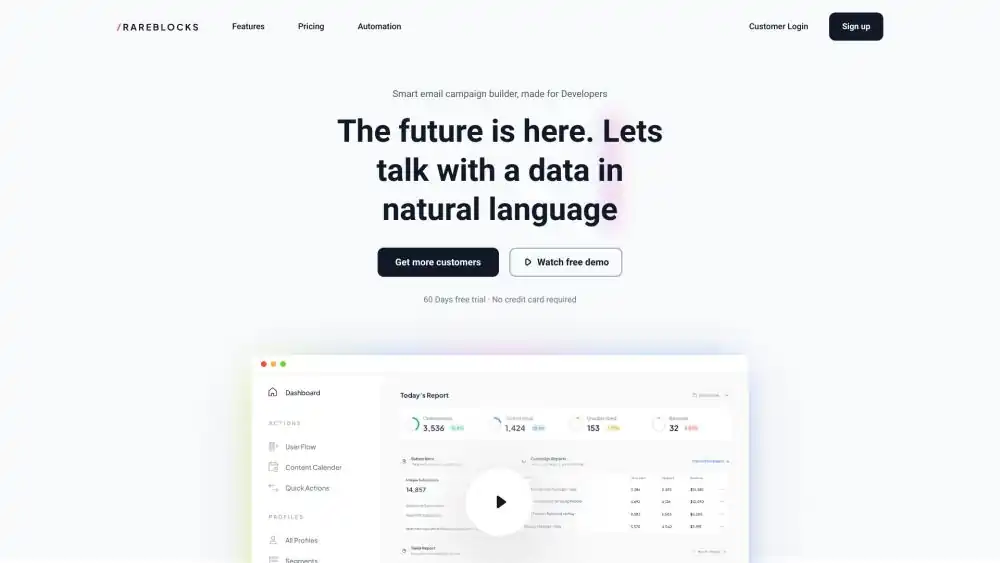Crafting an Introduction for Tensor.video
To write an effective introduction for Tensor.video, I’d need more information about its purpose and target audience. However, here are a few options based on different possibilities:
Option 1: Tensor.video – AI-powered Video Analysis
If Tensor.video is a platform that uses AI to analyze videos:
Unlock the power of your video content with Tensor.video. Our cutting-edge AI technology provides deep insights into your videos, helping you understand audience engagement, identify key moments, and optimize your content for maximum impact. Whether you’re a marketer, filmmaker, or educator, Tensor.video empowers you to extract valuable data from your videos and leverage it for success.
Option 2: Tensor.video – The Future of Video Creation
If Tensor.video is a tool for creating videos using AI:
Revolutionize your video creation process with Tensor.video. Our innovative platform leverages the power of AI to streamline video editing, generate creative effects, and personalize content for specific audiences. From automating repetitive tasks to generating stunning visuals, Tensor.video allows you to create professional-quality videos faster and easier than ever before.
Option 3: Tensor.video – Unveiling the Hidden Language of Videos
If Tensor.video focuses on extracting meaning and insights from videos:
Videos speak volumes, and Tensor.video helps you understand what they’re saying. Our advanced AI technology dives deeper than just pixels, analyzing visual elements, audio cues, and sentiment to extract the true meaning behind your videos. Gain insights into audience reactions, identify hidden trends, and make data-driven decisions to create more impactful video content.
Additionally, consider these points when crafting your introduction:
- Target audience: Who are you trying to reach? Tailor your language accordingly (technical vs. general audience).
- Unique selling proposition (USP): What sets Tensor.video apart from other video platforms or analysis tools? Highlight its key features and benefits.
- Problem and solution: Briefly outline the problem Tensor.video solves and how it does it.
Would you like me to help you refine an introduction based on the specific details of Tensor.video? I can help you tailor it further once you provide more information about the platform.
Pros and Cons
Pros and cons are simply the advantages and disadvantages of something. When making a decision, it’s often helpful to weigh up both sides before making a choice.
Example:
- Buying a new car:
- Pros: Improved safety features, better fuel economy, enhanced technology.
- Cons: Higher monthly payments, depreciation, increased insurance costs.
Would you like to weigh the pros and cons of something specific?
I can help you brainstorm ideas or provide information on a particular topic.
Pricing: The Art and Science of Setting Value
Pricing is the process of determining the monetary value of a product or service. It’s a crucial aspect of business strategy, as it directly impacts revenue, profitability, and customer perception.
Key Factors Affecting Pricing
- Cost of production: This includes materials, labor, overhead, and other expenses.
- Customer perceived value: What customers believe a product or service is worth.
- Competitor pricing: The prices charged by rival businesses.
- Market conditions: Economic factors, supply and demand, and market trends.
- Business objectives: Profit maximization, market share, or building brand image.
Common Pricing Strategies
- Cost-plus pricing: Adding a markup to the cost of production.
- Value-based pricing: Setting prices based on perceived customer value.
- Competitive pricing: Matching or slightly undercutting competitors’ prices.
- Penetration pricing: Offering a low price to gain market share.
- Skimming pricing: Setting a high initial price to capitalize on early adopters.
Would you like to explore a specific pricing strategy or discuss pricing for a particular product or service?
I can help you with:
- Calculating pricing based on costs
- Analyzing competitor pricing
- Developing value-based pricing strategies
- Understanding different pricing models
Please feel free to share more details about your pricing challenge.
An alternative is a choice or option. It’s something you can do or use instead of something else.
Examples:
- Noun: “I don’t like coffee. I prefer tea as an alternative.”
- Adjective: “We need to find an alternative solution to this problem.”
Synonyms:
- Option
- Choice
- Substitute
- Replacement
Would you like to explore a specific use of the word “alternative”?
For example, we could discuss:
- Alternative energy sources
- Alternative medicine
- Alternative lifestyles
Or, perhaps you have a specific question in mind?
FAQs is an acronym that stands for Frequently Asked Questions. It’s a collection of questions and their answers that people commonly ask about a particular topic or subject.
Purpose of FAQs:
- Provides quick answers: Helps users find information without having to search for it.
- Saves time: Reduces the need for repeated inquiries.
- Improves customer satisfaction: Offers efficient support.
- Enhances website usability: Improves user experience.
Common Uses of FAQs:
- Customer service: Answering common product or service questions.
- Online help centers: Providing troubleshooting guidance.
- Knowledge bases: Offering information on a specific topic.
- Educational resources: Explaining complex concepts.
Would you like to create an FAQ for a specific topic? I can help you brainstorm questions and answers.
Or, perhaps you have a question about creating or using an FAQ?
A conclusion is the final part of something. It’s where you summarize your main points, offer final thoughts, or draw a final judgment.
Common Uses of Conclusions:
- Essays and reports: Summarizing key arguments and providing a final perspective.
- Speeches and presentations: Wrapping up main points and leaving a lasting impression.
- Research studies: Presenting final findings and implications.
- Problem-solving: Determining a solution or course of action.
Key Elements of a Strong Conclusion:
- Reiterate main points: Briefly summarize the key ideas discussed.
- Offer final thoughts: Provide a concluding statement or perspective.
- Call to action: Encourage the audience to do something (optional).
- Avoid introducing new information: Stick to summarizing and concluding.
Would you like to work on writing a conclusion? I can help you structure it and refine your ideas. Or, perhaps you have a specific question about conclusions?
![]()






